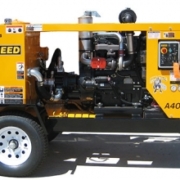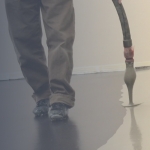What Factors Should Be Considered When Deciding Renting a Concrete Pump?
Renting equipment for construction projects can help optimize efficiency and minimize costs in the long run. A concrete pump rental in particular offers numerous advantages, particularly for projects with varying needs and durations. Continue reading about the key factors involved in renting a concrete pump.
Project Requirements and Scope
Start by assessing your project’s concrete requirements and scope. Take into account the volume, placement distance, and complexity to help you better determine the most suitable concrete pump for efficient and effective concrete placement on the job site.
Types of Concrete Pumps
There are several types of concrete pumps, each with distinct advantages and limitations. Here are the advantages of boom, line, and trailer-mounted pumps:
Boom pumps are ideal for reaching high-rise structures or difficult-to-access areas.
Line pumps work great for projects that require a lot of maneuverability and flexibility.
Trailer-mounted pumps offer portability and versatility for small-scale projects.
Limitations of concrete pumps:
Boom pumps have a hard time reaching confined spaces or tight corners on job sites with complex layouts. They also require a lot of space to set up and operate.
Line pumps are limited in their vertical reach compared to boom pumps. There are also distance limitations because the longer the pipeline is, the higher the risk of pressure loss.
Trailer-mounted pumps are limited by their mobility. They also have smaller pumping capacities and take longer to set up than boom pumps.
Pump Size and Capacity
When renting a concrete pump, its size and capacity will directly impact its performance and efficiency. Choosing the right concrete pump size ensures optimal concrete delivery rate and helps mitigate any downtime on the job site. Consider factors such as your project’s concrete volume and placement distance in your final decision.
Rental Cost and Budget
While rental costs are an upfront expense, they often prove more economical than purchasing a pump, especially for short-term construction projects. The total rental cost for a concrete pump depends on the pump type and duration of service. Come up with a budget and get quotes from different providers to help you discern the cost-effectiveness of renting a concrete pump.
Pump Maintenance and Condition
Well-maintained concrete pumps are less likely to break down or malfunction, and regular maintenance plays a critical role in ensuring their reliability throughout your project. Look at the service records to gain valuable insights into the condition of the equipment, including past maintenance activities, repairs, and any recurring issues that could compromise the integrity of the equipment.
Renting from reputable suppliers often comes with the added benefit of ongoing support and assistance with pump maintenance. Suppliers may offer maintenance packages or on-site servicing to ensure that the rented concrete pump remains in optimal condition throughout the rental period.
Rental Period and Scheduling
The rental period directly influences the rental costs, so it is best to optimize the rental duration based on your project’s timeline. Make sure the rental period aligns with key project milestones to minimize downtime and always communicate with the rental company to schedule convenient delivery and pick-up times. Additionally, you should negotiate rental terms that offer flexibility so you can adapt to changing project requirements without incurring additional costs or disruptions to the project.
Safety Considerations
Operator Training and Certification:
Proper operator training should be done so your workers become familiar with equipment controls, safety protocols, and emergency procedures. Certification ensures that operators possess the necessary skills and knowledge to operate the concrete pump safely and efficiently, minimizing the risk of accidents or injuries.
Equipment Inspection and Maintenance:
Regular equipment inspection will help you quickly identify potential safety hazards. Before operating the concrete pump, conduct thorough inspections to ensure that all components are in proper working condition. Any signs of damage or wear should be promptly addressed to prevent accidents or equipment malfunctions during operation.
Personal Protective Equipment (PPE):
Operators and workers should wear appropriate PPE, such as hard hats, safety goggles, high-visibility vests, gloves, and steel-toe boots, to protect against potential hazards. Ensuring all personnel have access to and use the required PPE enhances overall safety while the concrete pump is in operation.
Accessibility and Site Conditions
Site conditions and accessibility also influence concrete pump placement and operation. Factor in any space constraints, terrain, and obstacles that will affect pump maneuverability and efficiency. Doing site assessments and making necessary preparations will greatly reduce project disruptions on-site.
Rental Terms and Agreements
Review the rental terms and agreements to understand your responsibilities, liabilities, and applicable insurance coverage. Knowing potential penalties for equipment damage or misuse will encourage workers to handle and use the concrete pump responsibly.
Renting a concrete pump offers numerous benefits for construction projects, providing cost-effective solutions for concrete placement. Project managers and contractors like you can make informed decisions and optimize project outcomes by considering project requirements, pump types, rental costs, and safety considerations.
If you are in need of a concrete pump rental provider, you’ve come to the right place. Click here to browse our selection of rental concrete pumps.




